Phuoc Lam Pagoda is located in Xom Chua Hamlet, Tan Lan Commune, Can Duoc District, Long An Province, on the right side of Provincial Road 826 (from National Highway 1), 1.5 km south of Can Duoc Town and about 30 km west of Tan An Town. Phuoc Lam Pagoda is also near important traffic routes such as National Highway 1 (15 km away), National Highway 50 (1 km away).
Since the administrative division in the South in 1698, the relic land at that time belonged to Phuoc Loc Commune - Tan Binh District - Gia Dinh Prefecture. By 1808, Phuoc Loc Commune was upgraded to a district including Loc Thanh and Phuoc Dien communes, at this time the relic belonged to Tan Lan village, one of 28 villages of Loc Thanh Commune. In 1832, Thuan An and Phuoc Loc districts were separated from Tan Binh District to establish Tan An District. In 1862, after occupying the 3 provinces of Eastern Cochinchina, the French colonialists divided it into many administrative districts, of which Can Giuoc district was established from the former Phuoc Loc district. The relic at that time belonged to Muong Ong Buong hamlet, Tan Lan village, Loc Thanh Trung Commune. Since 1876, the relic land belonged to Cho Lon sub-region, My Tho area, one of the 4 large administrative regions that Admiral Duperre issued a decree to divide in Cochinchina.
On December 20, 1899, the Governor-General of Indochina issued a decree to change the sub-regions into provinces, officially applied on January 1, 1900, the relic at that time belonged to the territory of Cho Lon province. In 1923, the Rach Kien Agency was established, including villages in 3 Loc Thanh communes. From then until 1955, the relic belonged to the Rach Kien Agency (later Rach Kien district). From 1956, the Rach Kien District Agency was renamed Can Duoc district, belonging to Long An province when this province was established from the merger of Cho Lon and Tan An provinces. In 1967, the enemy government divided Can Duoc into two districts, Can Duoc and Rach Kien, the boundary between these two districts remained the same until 1975. After the liberation of the South, the two districts of Can Duoc and Rach Kien merged in 1977, including 16 communes and 1 town, which have remained the same to this day.
From Tan An town, visitors follow National Highway 1 to Go Den town, turn onto Provincial Road 835 to Xoai Doi intersection. From here, continue along Provincial Road 826 towards Can Duoc town, at kilometer 14 turn right onto the village road about 100m to reach the relic.
About 300 years ago, along with the reclamation of the Southern land, the first Vietnamese settlers set foot on the present-day Can Duoc land. Along with the settlers were Vietnamese monks and Chinese sailors who came to preach in this remote land. Although the exploration of the new land was very difficult but still wild and dense, these pioneers had to face difficulties, obstacles, diseases, wild animals and a completely strange environment, which are still left behind in folk songs such as:
"Mosquitoes chirp like flutes, plates wade like rice noodles
Come to this strange land
The bird's cry must be feared, the fish must be frightened.
Faced with that reality, to survive, the migrants not only had to have a spirit of determination and diligence, but they also had to have a spiritual support. Buddhism met their needs. With origins as farmers in the Central and Northern regions, the migrants, in addition to worshiping their ancestors, also considered going to the temple to worship Buddha as a spiritual salvation to have more strength to cope with the difficulties in life. That is why the bamboo and leaf pagodas, temples, and Taoist temples built by monks quickly became places for believers to visit. When the population settled down and life became stable, large, majestic pagodas began to appear to replace the original thatched huts.
During the reign of the Nguyen Lords, the kings who revered Buddhism, many pagodas appeared in the Southern region. Influenced by that devotion, many people donated land and money to build pagodas or turned their houses into pagodas.
Phuoc Lam Pagoda was originally the private residence of Mr. Bui Van Minh, built in the year of Tan Ty (1880). Mr. Bui Van Minh was a wealthy landowner in the area. During his lifetime, he contributed a lot of money and did many public works in the village, so when he passed away, he was honored as a virtuous man and was worshiped in Tan Lan communal house. Because he was devoted to Buddhism and had no children, he "converted his house into a temple" and established Phuoc Lam Pagoda, a type of village temple that was both a place to worship Buddha and an ancestral temple of the Bui family. Out of respect for Mr. Bui Van Minh, the villagers avoided calling him Mr. Mieng and the pagoda he founded, in addition to its Chinese name Phuoc Lam Tu, was also called Mr. Mieng Pagoda. Since Phuoc Lam Pagoda was built, the number of followers coming and going has increased, and the devotion to Buddhism among the people here has been strengthened and developed. That is why, in the area near Phuoc Lam Pagoda, 3 other pagodas were built one after another. Since the early days of reclamation, residents named this area Xom Muong Ong Buong. When Phuoc Lam Pagoda and 3 new pagodas were built, the name Xom Chua replaced the name Xom Muong Ong Buong on the administrative map. Due to the development of Buddhism and favorable geographical location, Buddhism in Can Duoc has had a regular and close relationship with the Saigon, Cho Lon, and Tien Giang regions. A proof of this is that after establishing the pagoda, Mr. Bui Van Minh invited monk Hong Hieu, who had studied at Giac Hai Pagoda (now Ho Chi Minh City), to be the first abbot of Phuoc Lam Pagoda. Giac Lam Pagoda, an ancient temple in Ho Chi Minh City (built in 1744), is also the ancestral temple of the pagodas of the Luc Hoa sect in Can Duoc, including Phuoc Lam Pagoda. Around 1890, Master Hong Hieu built another shrine next to Phuoc Lam Pagoda, which Mr. Bui Van Minh had built in 1880. That is the main shrine of Phuoc Lam Pagoda today. The old main shrine was used as the pagoda's ancestral hall and the Bui family's ancestral hall. In addition, on both sides of the old main shrine, there were two rows of houses, the east wing and the west wing, which were the Bui family's rice mills and were used as warehouses and kitchens.
Within 10 years, with the efforts of Mr. Bui Van Minh and monk Hong Hieu, Phuoc Lam Pagoda was completely built: before that, Mr. Minh also donated to the pagoda several dozen fields to cultivate and collect rent to raise financial resources for Buddhist activities. Thanks to that, with the devotion of Buddhists, Phuoc Lam Pagoda became a large, spacious pagoda, with a system of rafters and pillars made entirely of precious wood. The construction of the pagoda was undertaken by famous craftsmen at that time. Particularly, the interior decoration, the panels, horizontal lacquered boards, parallel sentences and carved motifs were all done by famous wood carving artisans in Can Duoc - the Dinh family craftsmen.
Right from the beginning, thanks to the presence of the high-ranking monk Cao Duc Trong as abbot and propagator of the Dharma, along with the prestige and morality of the founder, Mr. Bui Van Minh, Phuoc Lam Pagoda soon became a Buddhist center of Can Duoc district. Currently, out of the 15 abbots of the pagodas in Can Duoc district, 9 have received precepts and studied at Phuoc Lam Pagoda. Phuoc Lam Pagoda, from the founder Bui Van Minh to now, has had 7 generations of inheritance, the current abbot is Zen master Thich Hue Thong.
Inheriting the patriotic tradition of Vietnamese Buddhism, the abbots of Phuoc Lam Pagoda have promoted the spirit of "engaging in the world" with the policy of "religion and nation". During the two resistance wars against French colonialism and American imperialism, the abbots sheltered and supported the revolutionary forces in Can Duoc. During the anti-American period, Phuoc Lam Pagoda was a revolutionary base, a place where a number of local leaders came and went to operate. That is why the enemy often bombarded the pagoda area, traces of which we can still clearly see today: the roof of the main hall was blown away, and the east and west wings were blown to pieces.
In general, for about 300 years, Can Duoc land was reclaimed by the Vietnamese, and during those years, Mahayana Buddhism was built and continuously developed. In the beginning, Buddhism was a spiritual consolation that helped the settlers overcome difficulties and obstacles when this place was still wild, with diseases and wild animals. Buddhism was one of the factors that connected people together, with a faith and deep sympathy. The openness and non-strictness of Buddhism were suitable and influenced the liberal spirit of the people of Can Duoc. The connection between Buddhism and the history of Can Duoc's reclaimation was extremely close. The development of Buddhism through its followers and the system of pagodas, especially Phuoc Lam Pagoda, is more or less a testament to the work of reclaiming and building the material and spiritual life of the people of Can Duoc during the time of reclaiming land and establishing settlements.


![[Photo] Panorama of the Opening Ceremony of the 43rd Nhan Dan Newspaper National Table Tennis Championship](https://vphoto.vietnam.vn/thumb/1200x675/vietnam/resource/IMAGE/2025/5/19/5e22950340b941309280448198bcf1d9)
![[Photo] General Secretary To Lam attends the conference to review 10 years of implementing Directive No. 05 of the Politburo and evaluate the results of implementing Regulation No. 09 of the Central Public Security Party Committee.](https://vphoto.vietnam.vn/thumb/1200x675/vietnam/resource/IMAGE/2025/5/19/2f44458c655a4403acd7929dbbfa5039)


![[Photo] President Luong Cuong presents the 40-year Party membership badge to Chief of the Office of the President Le Khanh Hai](https://vphoto.vietnam.vn/thumb/1200x675/vietnam/resource/IMAGE/2025/5/19/a22bc55dd7bf4a2ab7e3958d32282c15)
![[Photo] Close-up of Tang Long Bridge, Thu Duc City after repairing rutting](https://vphoto.vietnam.vn/thumb/1200x675/vietnam/resource/IMAGE/2025/5/19/086736d9d11f43198f5bd8d78df9bd41)


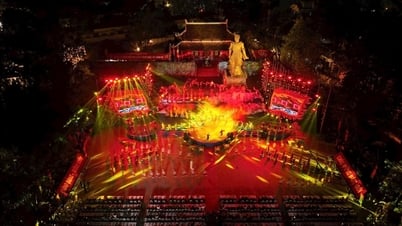









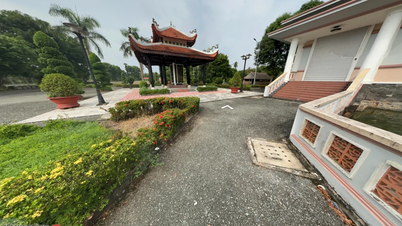
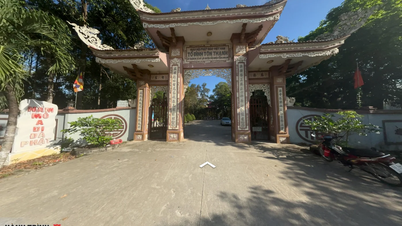

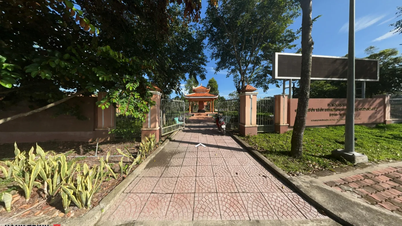





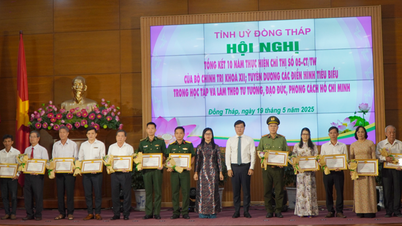

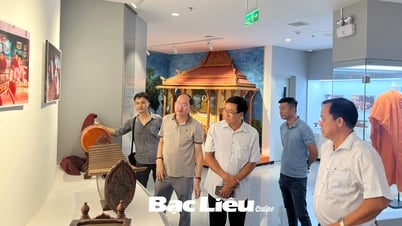
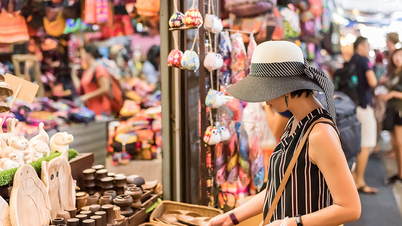
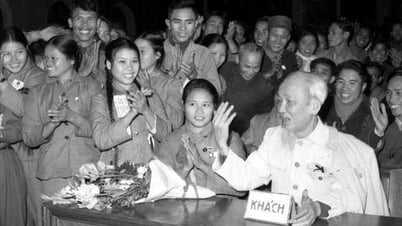

![[Photo] Prime Minister Pham Minh Chinh inspects the progress of the National Exhibition and Fair Center project](https://vphoto.vietnam.vn/thumb/1200x675/vietnam/resource/IMAGE/2025/5/19/35189ac8807140d897ad2b7d2583fbae)







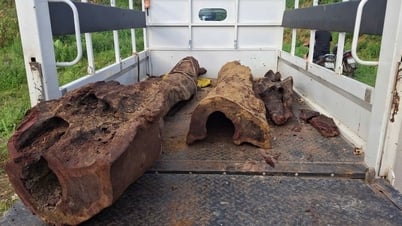








































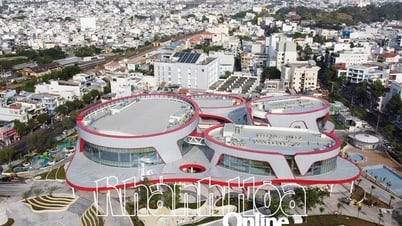

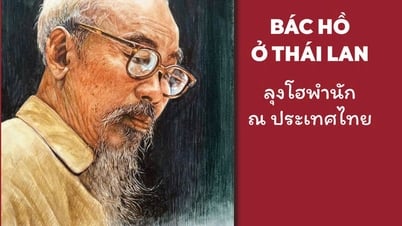






![[VIDEO] - Enhancing the value of Quang Nam OCOP products through trade connections](https://vphoto.vietnam.vn/thumb/402x226/vietnam/resource/IMAGE/2025/5/17/5be5b5fff1f14914986fad159097a677)





Comment (0)